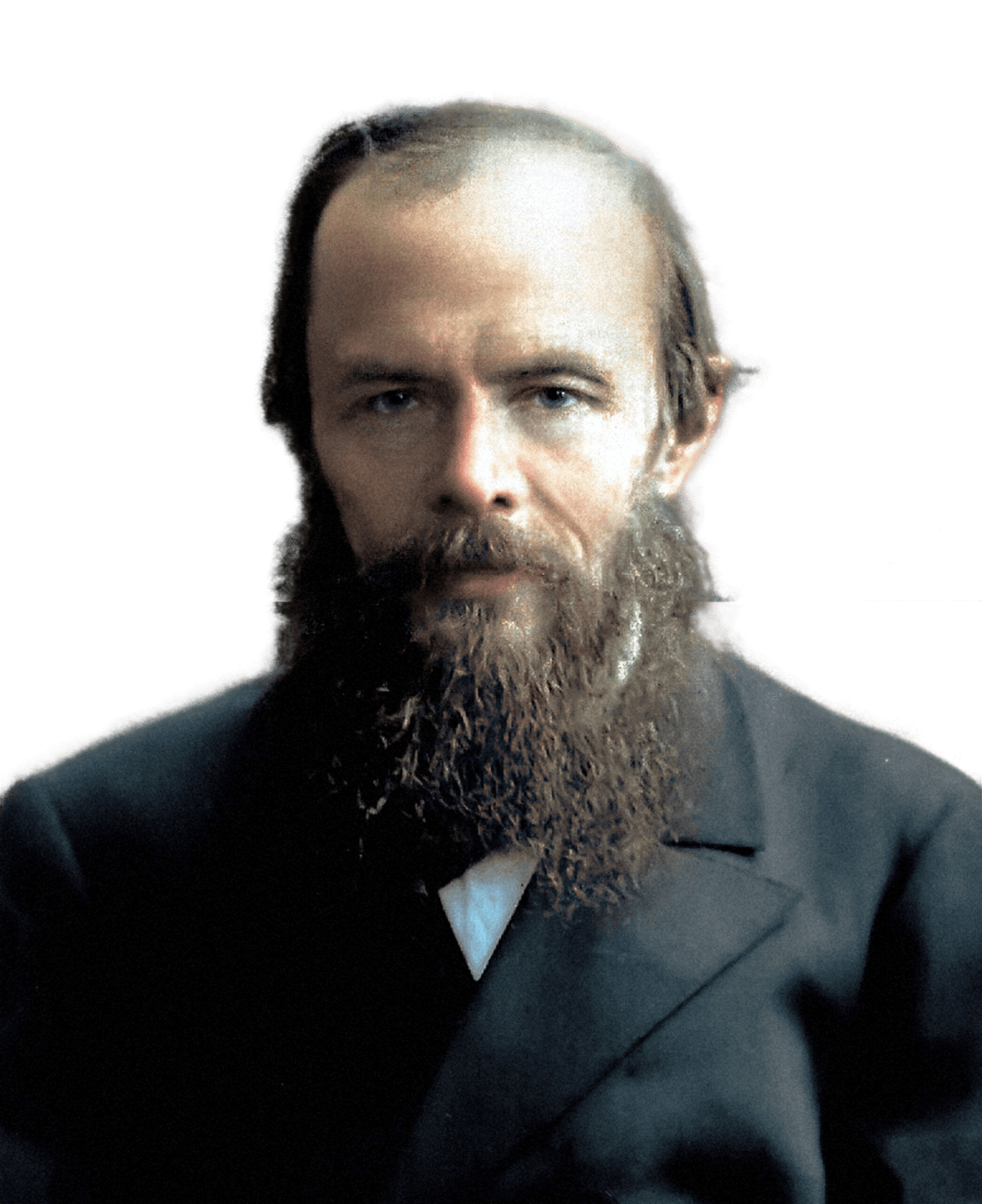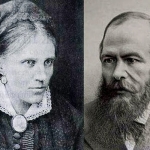
10.12.2022
Severely experiencing the death of his mother (1837), Dostoevsky by decision of his father entered St. Petersburg Military Engineering School – one of the best schools of the time. The new life was given to him with a great strain of strength, nerves, ambition. But there was also another life – the inner, secret, unknown to others.
In 1839 his father dies unexpectedly. This news shook Dostoevsky and provoked a severe nervous seizure – a precursor of future epilepsy, to which he had a hereditary predisposition.
He graduated from the school in 1843 and was enrolled in the drawing room of the Engineering Department. A year later he resigned, convinced that his vocation was literature.
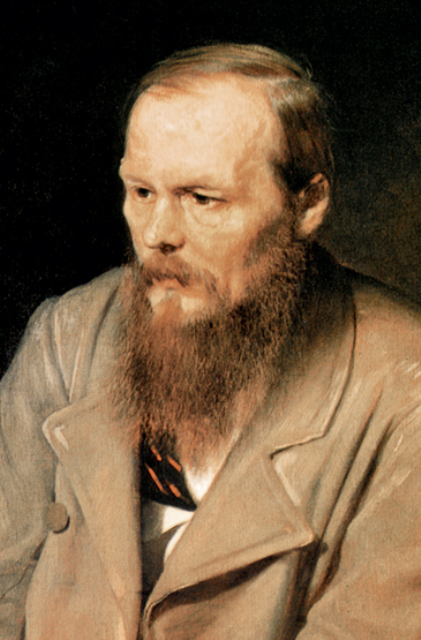
Dostoevsky’s first novel, Poor People, was written in 1845 and published by Nekrasov in the Petersburg Collection (1846). Belinsky proclaimed “the appearance… of an extraordinary talent…”. The Tales of the Double” (1846) and “The Mistress” (1847) were evaluated lower by Belinsky, who pointed out the tenseness of the narration, but Dostoevsky continued to write in his own way and did not agree with the critic’s appraisal. Later he published White Nights (1848) and Netochka Nezvanova (1849), which reveal features of Dostoevsky’s realism that set him apart from the writers of the “natural school”: deep psychologism, the exceptionality of characters and situations.
Dostoevsky’s successful literary career comes to a tragic halt. Dostoevsky was a member of the Petrashevsky circle, which united followers of French utopian socialism (Fourier, Saint-Simon). In 1849 the writer was arrested for participation in this circle and sentenced to death, which was replaced by four years of hard labor and settlement in Siberia.
After the death of Nikolai I and the beginning of the liberal reign of Alexander II, Dostoevsky’s fate, like that of many political prisoners, was mitigated. His nobility rights were restored and he retired in 1859 with the rank of lieutenant-colonel (in 1849, standing at the scaffold, he heard the rescript: “…retired Lieutenant… to hard labor in fortresses for… 4 years, and then as a private”).
In 1859 Dostoevsky was allowed to live in Tver, then in St. Petersburg. At this time he published his stories “Uncle’s Dream”, “Stepanchikovo Village and its Inhabitants” (1859), his novel “The Humiliated and Insulted” (1861). Almost ten years of physical and moral torment sharpened Dostoevsky’s sensitivity to human suffering, increasing his intense search for social justice. These years were for him the years of mental breakthrough, the collapse of socialist illusions, the growing contradictions in his worldview. He actively participated in the public life of Russia, opposed the revolutionary-democratic program of Chernyshevsky and Dobrolyubov, rejected the theory of “art for art’s sake” and affirmed the social value of art.
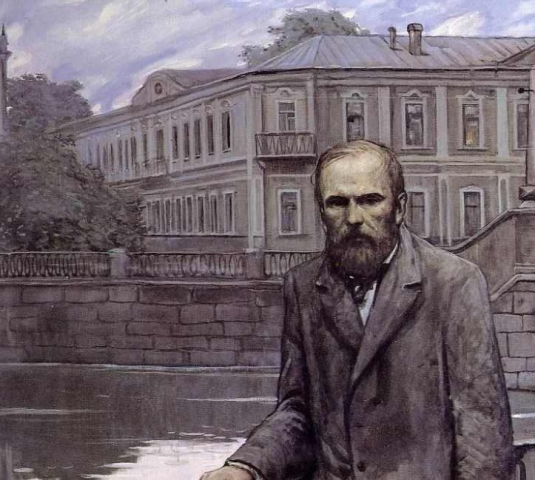
After the penal servitude he wrote “Notes from the Dead House”. The summer months of 1862 and 1863 the writer spends abroad, visiting Germany, England, France, Italy and other countries. He thought that the historical way which Europe had followed after the French revolution of 1789 would be ruinous for Russia as well as the new bourgeois relations, the negative characteristics of which had shocked him during his trips to Western Europe. Dostoevsky’s sociopolitical program of the early 1860s was based on a particular and original path for Russia toward an “earthly paradise”. In 1864 he published Notes from the Underground, which was an important work for the understanding of the writer’s changing world view. In 1865, while abroad, in the resort town of Wiesbaden, in order to restore his health, the writer began work on his novel Crime and Punishment (1866), which reflected the whole complex path of his inner quest.
In 1867 Dostoevsky married Anna Grigorievna Snitkina, his stenographer, who became his close and devoted friend. Soon they went abroad: they lived in Germany, Switzerland, Italy (1867 – 71). During these years the writer worked on his novels “The Idiot” (1868) and “The Possessed” (1870-71), which he finished already in Russia. In May 1872 the Dostoevskys left St. Petersburg for Staraya Russa, where they bought a modest country house and lived there with their two children even in winter. In Staraya Russa they wrote almost all of his novels “Teenager” (1874 – 75) and “The Brothers Karamazov” (1880).
From 1873 the writer became an editor-in-chief of Grazhdanin, in the pages of which he began to publish The Writer’s Diary, which was at that time a teacher of life for thousands of Russian people.
At the end of May 1880 Dostoevsky arrived in Moscow at the unveiling of a monument to Alexander Pushkin (on 6 June, the birthday of the great poet), where the whole of Moscow assembled. Turgenev, Maykov, Grigorovich and other Russian writers were there. Dostoevsky’s speech was called by Aksakov “brilliant, a historical event.”
The writer’s health was deteriorating and on January 28, 1881 in Petersburg Dostoevsky died. He is buried on Tikhvin cemetery of Alexander Nevsky Lavra.
The Fantastic in Creation
In the works of F.M. Dostoevsky there are often enough fantastic motifs, above all, the mystical component in the works.
Dostoevsky twice gave the subtitle “fantastic story” to his works. In The Gentleman, the fantastic device consists in the fact that the narrative is a stream of consciousness of the main character. Nowadays the fantastic nature of this technique is no longer felt, but it was on the example of The Gentleman that Dostoevsky once discussed the characteristics of his method as “realism in the highest sense,” “realism that reaches the fantastic.”
Another “fantastic story,” The Funny Man’s Dream, describes a fragile alien utopia and its destruction under the corrupting influence of an earthling who has gone there.
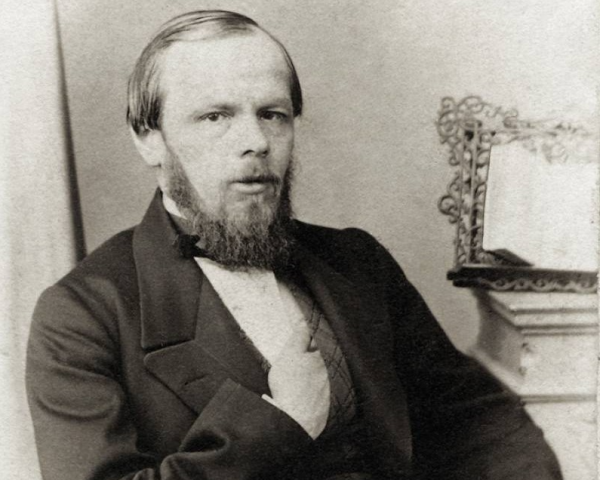
On the basis of a fantastic assumption – the sudden appearance of the protagonist of his complete double, who gradually takes his place in life – the story “The Double” is built. In “The Mistress” the then fashionable ideas of mesmerism and animal magnetism are used to motivate the plot.
Also fantastical in nature is the story “Bobok,” devoted to the negotiations of the dead in the cemetery. Also, a fantastic assumption underlies one of the author’s most famous humorous stories, “Crocodile” (a commoner swallowed by a crocodile feels very good about himself).
Semi-fantastical, mystical motifs are also found in Dostoevsky’s serious works, such as the novels The Brothers Karamazov (in particular, the chapters “The Grand Inquisitor,” “The Devil. Ivan Fedorovich’s Nightmare”) and The Possessed. Dostoevsky also uses science-fiction imagery, for example, describing Raskolnikov’s dream of intelligent microbes enslaving humanity, an artificial satellite of the Earth in Ivan Karamazov’s conversation with the devil.
On the whole, most researchers recognize the presence of a fantastic element in Dostoevsky’s works, both as the basis of the plot and as a means of describing the places of action (“Dostoevsky’s St. Petersburg” is sometimes recognized as a kind of fantastic city, a “ghost town” which does not repeat the real historical St. Petersburg in every detail).
Dostoevsky was also one of the first to introduce Edgar Poe to Russian audiences, noting his art of detail, thanks to which even his trip to the moon looks plausible, and because of this Poe “if there is fantasy, it is something tangible.” The definition of fantasy given by F.M. Dostoyevsky in a private letter published in 1906 (“The fantastic in art has a limit and rules. The fantastic must come into contact with the real to such an extent that you must almost believe it”), became extremely popular later on and is often cited.
